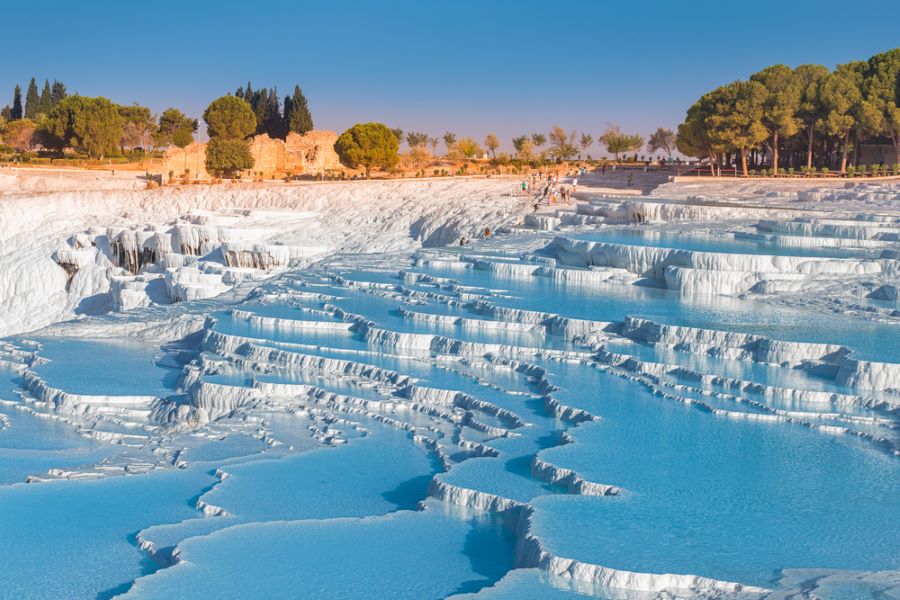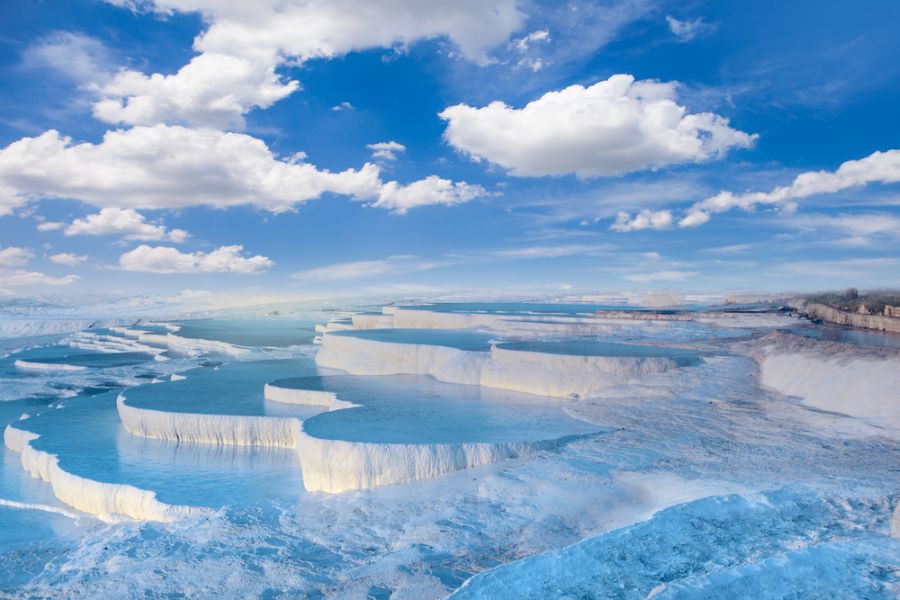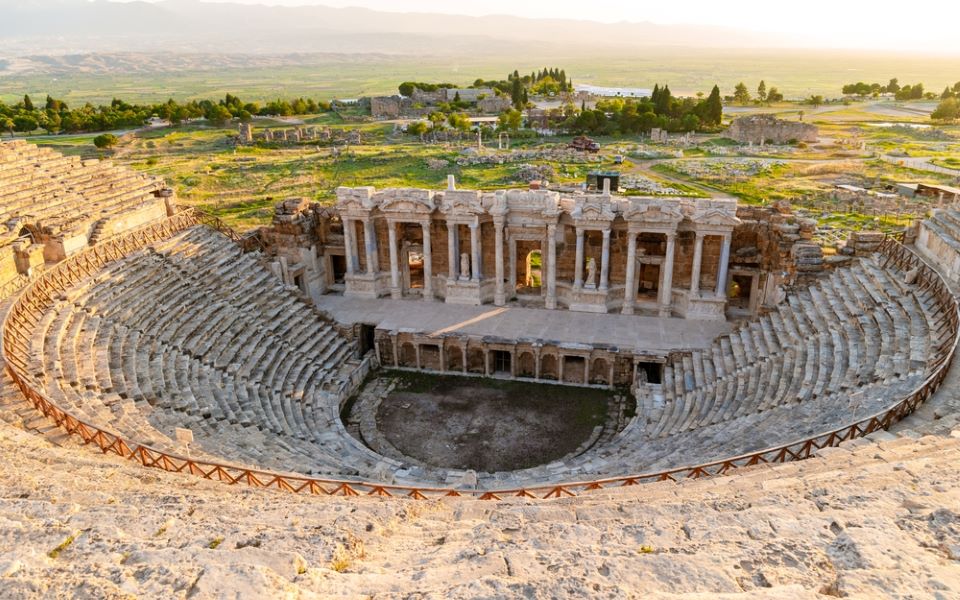Pamukkale, Turkey in the Denizli Province in southwestern Turkey is a mesmerizing natural wonder, inviting travelers to experience its thermal pools and terraces. You’ve probably seen these lustrous pools on social media as one of the “Places to See Before You Die,” simply because of the visual spectacle they represent. But there’s more to these pools than just luster. The area is also famed and prized for its mineral-rich waters.
Pamukkale means “Cotton Castle” in Turkish, and it’s easy to see why with its stunning snow-white travertine terraces. This UNESCO World Heritage site has drawn visitors for centuries, attracted by its beauty and supposed healing properties.
Pamukkale’s history is deeply intertwined with the ancient city of Hierapolis, founded in the 2nd century BCE by the Attalid kings of Pergamon. The thermal springs of Pamukkale have been used as a spa since the establishment of Hierapolis, with the Romans particularly valuing the site for its reputed therapeutic properties. They constructed baths, temples, and other facilities to accommodate those seeking relief from ailments in the mineral-rich waters.

Pamukkale Hot Springs, Turkey
The travertine terraces of Pamukkale were formed over millennia by the calcite-laden waters from the hot springs. As the water flows down the mountainside, it leaves behind calcium deposits that gradually solidify, creating the striking white terraces. These formations, combined with the turquoise pools of water, create a stunning landscape that appears almost otherworldly.
Pamukkale’s significance extends beyond its natural beauty. The ancient ruins of Hierapolis, adjacent to the terraces, add an archaeological dimension to the site. Visitors can explore well-preserved structures such as the Roman Theatre, the Temple of Apollo, and the Necropolis, which houses an extensive collection of sarcophagi and tombs. The combination of natural and man-made wonders provides a distinctive glimpse into the past, illustrating the importance of Pamukkale in ancient times.

Pamukkale, Turkey
Reaching Pamukkale is relatively straightforward. The nearest major city is Denizli, about 20 kilometers away. Denizli is well-connected by air, with regular flights from Istanbul and other major Turkish cities. Since Pamukkale is about a six and a half hour drive from Istanbul, flying into Denizli is probably your best bet. From Denizli, visitors can take a bus, taxi, or rental car to Pamukkale. The journey is short, and the road offers scenic views of the surrounding countryside.
Upon arrival, visitors can expect a memorable experience. The entrance to Pamukkale leads to a pathway that ascends the terraces, allowing visitors to walk barefoot through the warm, mineral-rich waters. The sensation of the smooth travertine underfoot, combined with the soothing warmth of the water, provides a unique and relaxing experience. Visitors can also bathe in designated areas, enjoying the healing properties of the thermal waters, which are said to aid in treating various skin conditions and ailments.
You Might Also Enjoy: Offbeat Travel: The Fairy Chimneys of Cappadocia, Turkey

Roman Theatre, Hierapolis, Pamukkale, Turkey
Pamukkale is also renowned for its sunsets. As the sun descends, the terraces and pools are bathed in a golden glow, creating a picturesque scene that is perfect for photography. Many visitors choose to end their day by relaxing in the thermal waters while watching the sunset, a serene and unforgettable experience.
Pamukkale is a destination that combines natural beauty, historical significance, and a distinctive visitor experience. Whether drawn by the allure of the thermal pools, the ancient ruins of Hierapolis, or the breathtaking landscapes, international travelers will find Pamukkale a place that captivates and rejuvenates, leaving a lasting impression on all who visit.
Have you ever been to Pamukkale? Tell us about it in the comments below!


Leave a Reply